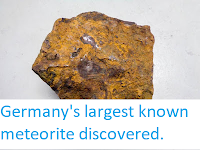The Piscis Austrinid Meteor Shower is visible each year between 15 July and 10 August, typically peaking on 29 July. Although it is not a major shower, typically only producing about 5 meteors per hour at its peak. The shower has a radiant point (point from which the meteors
appear to radiate) in the constellation of
Piscis Austrinus, which is best seen from the Southern
Hemisphere, but hard to see in the Northern Hemisphere. As the Moon will
be full on 1 March, viewing of this meteor shower will not be ideal this year.
The radiant point of the Piscis Austrinid Meteor Shower. Universe Guide.
Meteor
showers are thought to be largely composed of material from the
tails of comets. Comets are composed largely of ice (mostly water and
carbon
dioxide), and when they fall into the inner Solar System the outer
layers of this boil away, forming a visible tail (which always points
away from the Sun, not in the direction the comet is coming from, as our
Earth-bound experience would lead us to expect). Particles of rock and
dust from within the comet are freed by this melting (strictly
sublimation, transforming directly from a solid to a gas due to the low
pressure on it's surface) of the comet into the tail and continue to
orbit in the
same path as the comet, falling behind over time. However the parent body of the Piscis Austrinids is unclear.
The Earth passing through a stream of comet dust, resulting in a meteor shower. Not to scale. Astro Bob.
See also...
Follow Sciency Thoughts on Facebook.







